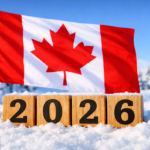
Canada’s Shifting Immigration Landscape: From Growth to Uncertainty
A Historical Perspective on Canada’s Immigration Model
Canada has long been recognized as a country shaped by immigration. The foundation of today’s immigration system is the Immigration and Refugee Protection Act (IRPA) of 2001, which emphasizes three pillars: economic growth, family reunification, and humanitarian protection.
In the post-World War II years, Canada opened its doors to large waves of European immigrants. By the 1960s, the introduction of a points-based system shifted focus to applicants’ skills, education, and language abilities rather than their country of origin.
Through the 1980s and 1990s, immigration became an economic tool to counter low birth rates and an aging population. Programs such as the Provincial Nominee Program (PNP) empowered provinces to select candidates to meet local labor needs. In 2015, Express Entry revolutionized selection by ranking skilled workers through the Comprehensive Ranking System (CRS).
Immigration Boom and Its Challenges
The COVID-19 pandemic marked a turning point. While borders initially closed, Canada dramatically raised immigration targets in 2021, welcoming over 400,000 newcomers annually. Temporary programs grew rapidly:
- Over 800,000 international students enrolled by 2023.
- Temporary foreign workers filled labor gaps in healthcare, tech, and agriculture.
By 2024, Canada’s population hit 41 million, with immigration accounting for 98% of growth. However, this surge exposed deep challenges:
- Housing shortages worsened, with home prices in major cities climbing by 50% from 2020 to 2024.
- Healthcare wait times grew as demand exceeded capacity.
- Public services were stretched thin.
Public opinion shifted sharply. In 2024, 60% of Canadians felt immigration levels were too high, compared to 30% before the pandemic.
The New Immigration Levels Plan (2025–2027)
Responding to these pressures, the government unveiled a new immigration strategy in October 2024. The 2025–2027 Levels Plan marked a dramatic shift from expansion to restraint:
- 395,000 permanent residents in 2025 (down from 500,000).
- 380,000 in 2026, and 365,000 in 2027.
- Temporary resident caps, aiming to reduce their share of the population to 5% by 2026.
Key reforms include:
- International Students: A 10% cut in study permits and tighter Post-Graduation Work Permit (PGWP) rules linked to labor market demand.
- Express Entry: Priority for healthcare, trades, and French-speaking applicants.
- Asylum System: Stricter fraud measures and partial visa requirements for Mexicans.
- Francophone Immigration: Target raised to 8.5% in 2025, with growth to 10% by 2027.
The Unresolved Challenges Facing Canada
Despite reforms, several urgent issues remain.
1. Housing and Affordability Crisis
Canada’s housing market has been stretched by rapid population growth. In cities like Toronto and Vancouver, rents are increasing by nearly 20% annually. Temporary residents, now over 7% of the population, intensify demand.
The government hopes lower immigration targets will ease the housing shortage by 670,000 units by 2027, but critics say the plan falls short without direct investment and provincial coordination.
2. Pressure on Healthcare and Public Services
While immigrants are vital to Canada’s healthcare workforce, the system is under severe stress. Emergency room closures, staff shortages, and long wait times highlight gaps between labor needs and actual immigration outcomes.
3. International Student and Worker Exploitation
International students face rising tuition, housing instability, and false promises of permanent residency. The 2024 cap reduced permits by 35%, yet problems like “diploma mills” remain.
Similarly, temporary foreign workers—particularly in agriculture and low-wage sectors—report poor working conditions and wage suppression.
4. Rising Asylum Claims and Border Issues
Global instability has fueled asylum applications, with 100,000 pending claims in 2025. While some measures, like new visa rules for Mexicans, have slowed irregular entries, Canada’s border management continues to face challenges.
5. The Question of Undocumented Workers
Canada has an estimated 500,000 undocumented workers, many of whom play essential roles in construction, agriculture, and services. Despite calls for regularization, the government has not taken significant steps, leaving many in precarious conditions.
6. Economic Strains and Skills Mismatches
Though immigration contributes to GDP growth, mismatches between qualifications and available jobs persist. Immigrants often face higher unemployment (12%) compared to the national average, with many working in roles below their skill level.
7. Public Opinion and Political Risks
Public skepticism toward immigration has grown. As consultations for the 2026–2028 Levels Plan closed in August 2025, opposition parties are pressing the government to adopt even stricter measures.
Minister Diab’s Silence: A Growing Concern
Minister Diab, appointed earlier in 2025, has been notably reserved in addressing these pressing issues. Her few statements have focused on humanitarian measures, while broader concerns like housing, healthcare, and undocumented workers remain unanswered.
Analysts suggest this may be a deliberate political strategy in a minority government, prioritizing internal reviews over public debate. Yet, critics warn that silence risks worsening public mistrust and leaving major challenges unresolved.
For a consultation about Immigration options, reach out to the CAD IMMIGRATION today!





